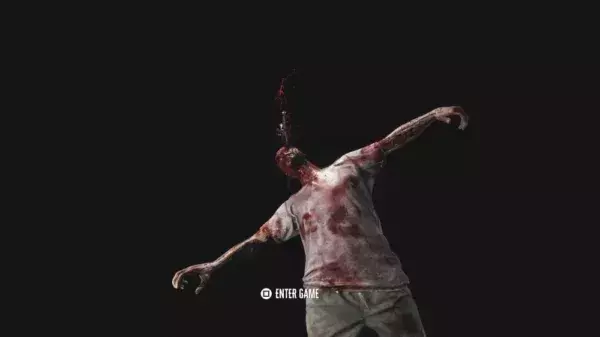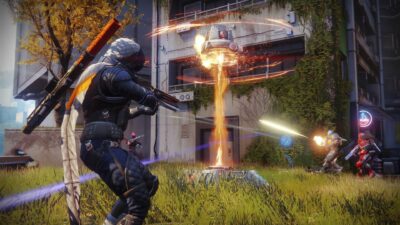
Does body horror help us work out our every day anxieties? Its prevalence in such games as Elden Ring, Fallout, Resident Evil and more certainly suggests so…
Squelching flesh. Protruding bones. The realm of body horror – filled with aberrant depictions of human flesh that make us fear our own physical forms – has always been somewhat over-represented in gaming. Think of every series that, in some respect, deals with plagues and mutations. It’s an exhaustive list: Fallout, BioShock, Bloodborne, Amnesia: The Dark Descent, Morrowind, Dark Souls, Borderlands, The Evil Within, Half-Life, Outlast. While playing Elden Ring, you may well come face to face with Godrick the Grafted, a pulpy tapestry of soldiers’ limbs, with a mighty dragon’s head emerging from his left side. In Resident Evil 7: Biohazard, you control Ethan Winters as he’s plunged into a full carnival of dismemberment while held captive by the cannibalistic Baker family in their Louisiana home. And gaining a power-up in The Binding of Isaac comes at the cost of your character’s own humanity, as he starts to grow sentient tumours, spider fangs, and mushroom caps.
There’s an obvious practical necessity here. In a medium that demands a steady supply of meat bags for players to pummel their weapons into, the mutant offers an easy route out. They’re humanoid enough in their movements that it doesn’t present an overwhelming challenge for animators, but not so obviously sentient that players risk any pang of guilt after they’ve mowed them down.

Jaw-dropping body horror in Amnesia: The Dark Descent. Credit: Frictional Games.
But even decisions made for logistical reasons can still, even unintentionally, reveal a little about our collective state of mind. It’s hard to look at the upcoming schedule of horror games and their body horror, and not wonder how these stories will be processed by a world still under the grip of a pandemic. One, especially, that comes with a muted but steadily growing fear of what long Covid, and other lingering side effects, may be doing to the bodies of the previously infected. So much of this sub-genre is fuelled by the terror of losing control. Even if these games have been in development for years, isn’t it odd how perfectly they capture the mood of the moment?
Many of the body horror classics are returning to the scene in remastered, revitalised forms. Next year’s Dead Space redo will bring back the Necromorphs – reanimated corpses that now only exist to corrupt more flesh and spread the terrible disease that controls them. The remake of The Last of Us Part I, which presumably serves as a companion piece to the upcoming HBO series, will only help solidify the Cordyceps brain infection as one of the definitive pop culture takes on the zombie. And it’s significantly more grotesque than what we’re used to, revolving not around reanimation but fungal decay. Capcom will also continue its streak of Resident Evil remakes with a new take on its fourth entry, originally released in 2005.

Actually, I don’t feel all that hungry all of a sudden, but thanks for the offer. Credit: Capcom.
Of the new kids in town, mutations and transformations are equally common motifs. The Callisto Protocol, a spiritual successor to Dead Space, deals with human genetic experiments let loose on one of Jupiter’s moons. ILL, inspired by John Carpenter’s The Thing, promises to blur the line between man and crab. Its clattering, crawling creatures look truly repulsive, and come with the ability to reorganise their bushels of flesh into new shapes mid-battle, leaving the player without a plan or a shred of hope. Most intriguing of them all is Scorn, in the works since 2014, which blends the biomechanical nightmares of HR Giger with the fleshy weapons of David Cronenberg’s virtual reality-based horror, eXistenZ (1999).
Yes, fleshy weapons: the mechanic here is that the player’s trusty pistol and a shotgun are living organisms. They’re fed not bullets but teeth – into hungry, gaping mouths. Each shot is accompanied by an oozing crunch. This is the apex of body horror, writ large as bloody and monstrous as it can be: a fear of the self, of transforming so much that we lose our own sense of humanity. And as dark as that notion may sound, there’s an odd kind of safety in even the most perturbing of fantasies. A game like Scorn offers a safe space to work out very present anxieties, by smashing keys and unleashing mayhem. The grotesque, on occasion, can really be a balm.





